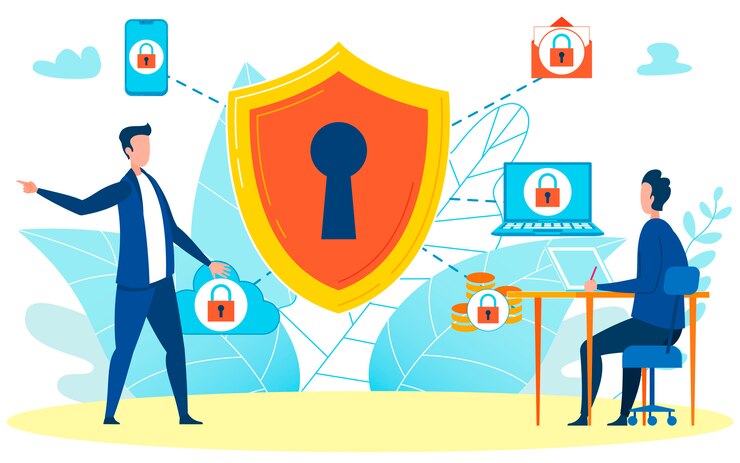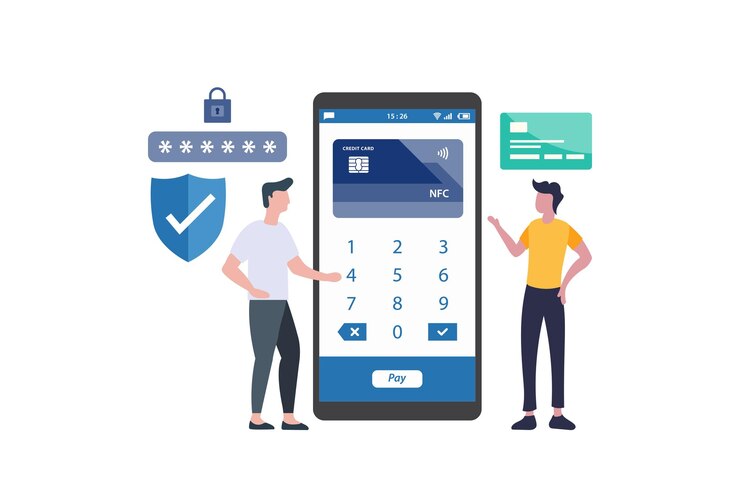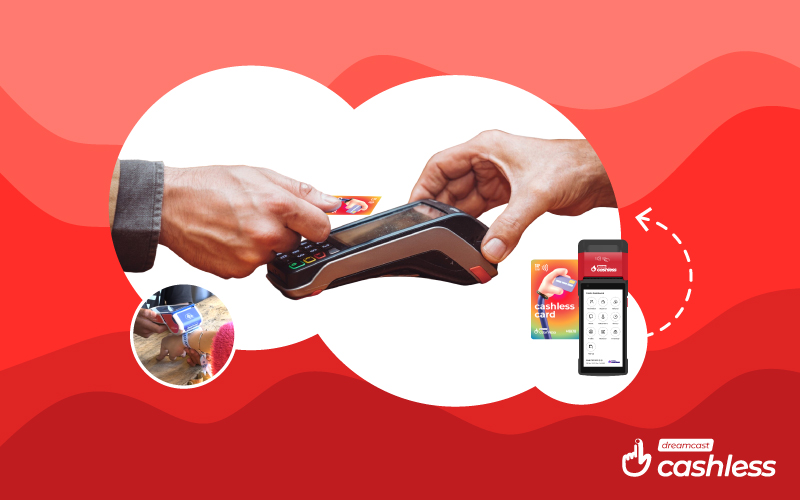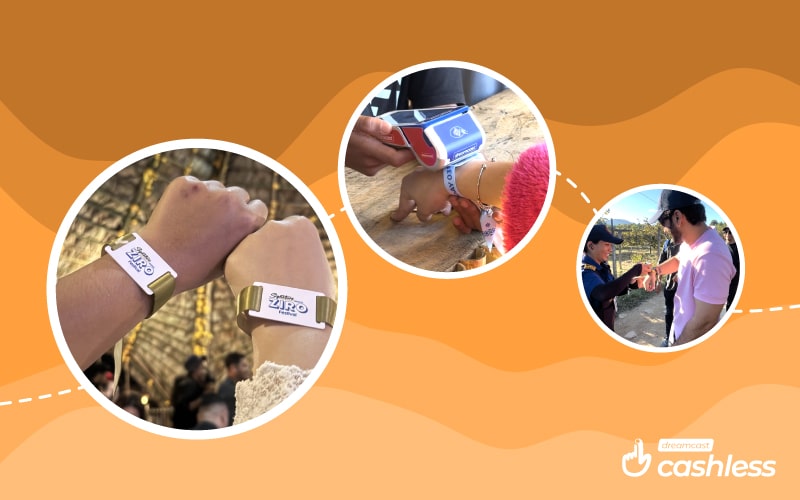Are cashless payment methods secure in this digital world? This question is at the forefront of discussions as we navigate the intersection of convenience and technology. Let’s dive deep into the security procedures found in contemporary cashless payment systems to discover the many levels of security encasing your financial transactions.
Knowing the Fundamentals of Modern Cashless Payment System

Contactless payments, mobile wallets, credit/debit cards, and other digital means have replaced real cash in transactions, completely changing the way people do business. This change has been widespread in several industries, including retail, hospitality, healthcare, and transportation. Additionally, it provides advantages for organizations including more convenience, quicker transactions, less handling of currency, and better tracking capabilities.
For this ecosystem to guarantee the secrecy and integrity of financial transactions, secure communication routes, encryption methods, and authentication mechanisms are essential.
“It’s not just about convenience and efficiency; it’s about building a secure and resilient ecosystem that fosters trust, protects assets, and upholds the integrity of modern payment systems.”
Threat Landscape
Data breaches, virus assaults, phishing tactics, and identity theft are just a few of the security risks that the digital sphere presents to cashless payment systems. These concerns are sharply brought to light by recent cybersecurity events, which also highlight the dynamic nature of security threats and the necessity of effective defenses. Such risks can have serious consequences that include lost money, harm to one’s reputation, and a decline in client confidence.
In addition, the complexity of modern payment infrastructures, coupled with the proliferation of interconnected devices and networks, creates vulnerabilities that malicious hackers may exploit. Additionally, businesses and payment service providers must be alert and aggressive in tackling new risks since cybercriminals are always changing their strategies.
Security Protocols Explained
During transmission, sensitive data is transformed into a coded format via encryption, which makes it unreadable by unauthorized parties and plays a critical role in protecting payment data. Strong security against interception and data breaches is provided by advanced encryption technologies like AES (Advanced Encryption Standard). Tokenization, on the other hand, substitutes distinct tokens for actual card information, reducing the possibility of sensitive data exposure and boosting transaction security. Because tokens have no value outside of a particular transaction, they provide an additional line of protection against fraudsters trying to capture payment information.

Furthermore, by forcing users to authenticate their identity using two different factors—such as a password and a one-time code given to their mobile device—Two-Factor Authentication (2FA) provides an additional layer of protection.
Read More:- 8 Things to Know About NFC Payment System- Essential Insights for 2024
Compliance and laws:
Strict criteria for protecting payment card data are established by industry standards and laws such as PCI DSS (Payment Card Industry Data Security Standard). Adherence to these guidelines is crucial, as it guarantees a safe payment milieu, fosters client confidence, and minimizes the possibility of security violations. PCI DSS criteria, which include upholding a secure network, safeguarding cardholder data, putting in place robust access control mechanisms, continuous threat detection and monitoring , and upholding an information security policy, must be followed by companies in the payment business.
Financial fines, legal ramifications, and reputational harm may arise from breaking these norms. In addition, industry groups and regulatory authorities are always updating best practices and security requirements to deal with new threats and developments in technology.
Secure Payment Gateways:
These essential components help to protect transactions. To protect sensitive data during transmission, they make use of technologies like SSL/TLS encryption, fraud detection algorithms, tokenization support, and secure payment APIs. In order to improve overall transaction security, these gateways also identify suspicious behavior, add extra verification stages for high-risk transactions, and monitor transactions in real-time. To find and fix possible security flaws, respectable payment gateway suppliers also regularly carry out penetration tests, security audits, and vulnerability assessments.

In order to maintain a proactive approach to risk mitigation, they work in conjunction with industry partners, cybersecurity specialists, and regulatory bodies to remain up to date on new security trends and threats. Secure payment gateways furnish merchants with additional tools and resources to augment security protocols, including chargeback management, fraud prevention solutions, and secure consumer authentication techniques. Additionally, businesses may reduce fraud losses, safeguard consumer information, and increase customer trust by utilizing these capabilities.
Merchant Responsibilities
Keeping a secure payment environment is a major responsibility of merchants. This includes educating staff members on security best practices, screening suppliers for safe payment processing options, and routinely upgrading payment software and apps to fix vulnerabilities.
- Software updates and patches: Modern cashless payment system providers should send out security patches, firmware upgrades, and software updates to merchants very away. Critical security fixes, bug patches, and performance improvements that reduce possible vulnerabilities and boost system dependability are frequently included in these upgrades.
- Employee education: Promoting a culture of security awareness inside the company requires educating staff members about data protection laws, fraud prevention strategies, and security best practices. Workers ought to receive training on spotting phishing emails, social engineering schemes, and other dubious activities that might jeopardize payment security.
- Vendor management: To guarantee the security and integrity of financial transactions, choosing reliable suppliers and service providers for payment processing solutions is essential. In addition, it is recommended that merchants perform due diligence, examine the security certifications of their vendors, and evaluate their security protocols, data security procedures, and adherence to industry standards.
Emerging technology
The safety of cashless payments is changing thanks to new Modern cashless payment systems and technology like biometric verification, blockchain for safe transfers, and AI that finds scams. Biometric data, such as fingerprints or face recognition, make it easier to verify a user’s identity. An AI-driven fraud detection system looks at trends of transactions, finds things that don’t seem right, and stops fraud in real time to make total security stronger.
- Biometric authentication: Techniques like fingerprint scanning, face recognition, and eye scanning offer a high level of security by individually recognizing people based on their physical or behavioral traits. These biological identifiers are great for better user authentication and stopping unauthorized access because they are hard to copy or fake.
- Blockchain for safe transactions: Blockchain technology provides an autonomous, unchangeable ledger for keeping track of transactions, which ensures data security, openness, and impermeability. The timestamped, cryptographically protected, and linked events in the blockchain make a safe and easily accessible record of all financial activity.
- AI-driven fraud detection: To find outliers, spot fraud, and stop illegal transactions in real time, artificial intelligence programs look at huge amounts of transaction data, historical data, and trends of user behavior. When machine learning models are used, fraud detection systems work better because they are always learning and changing to deal with new threats.
Read More:- Exploring Features & Advantages of a Cashless Payment System
In conclusion, businesses and consumers can confidently embrace the benefits of cashless transactions while safeguarding sensitive financial information by thoroughly understanding the threats, implementing advanced security measures, adhering to regulations, and leveraging emerging technologies. Stay informed, stay secure!

FAQs
To maintain data integrity and prevent fraud, event-oriented cashless payment systems frequently include strong security features like tokenization, encryption, secure authentication techniques (such as biometrics or PINs), and real-time transaction monitoring.
Modern cashless payment systems for events place a high priority on data security. To avoid unwanted access, they store client data in safe, PCI-compliant settings and use robust encryption protocols (such as SSL/TLS) for data transfer.
Yes, modern cashless payment systems offer event organizers real-time transaction monitoring and reporting tools. These tools enable organizers to track sales, identify trends, detect anomalies, and manage financial operations securely.






